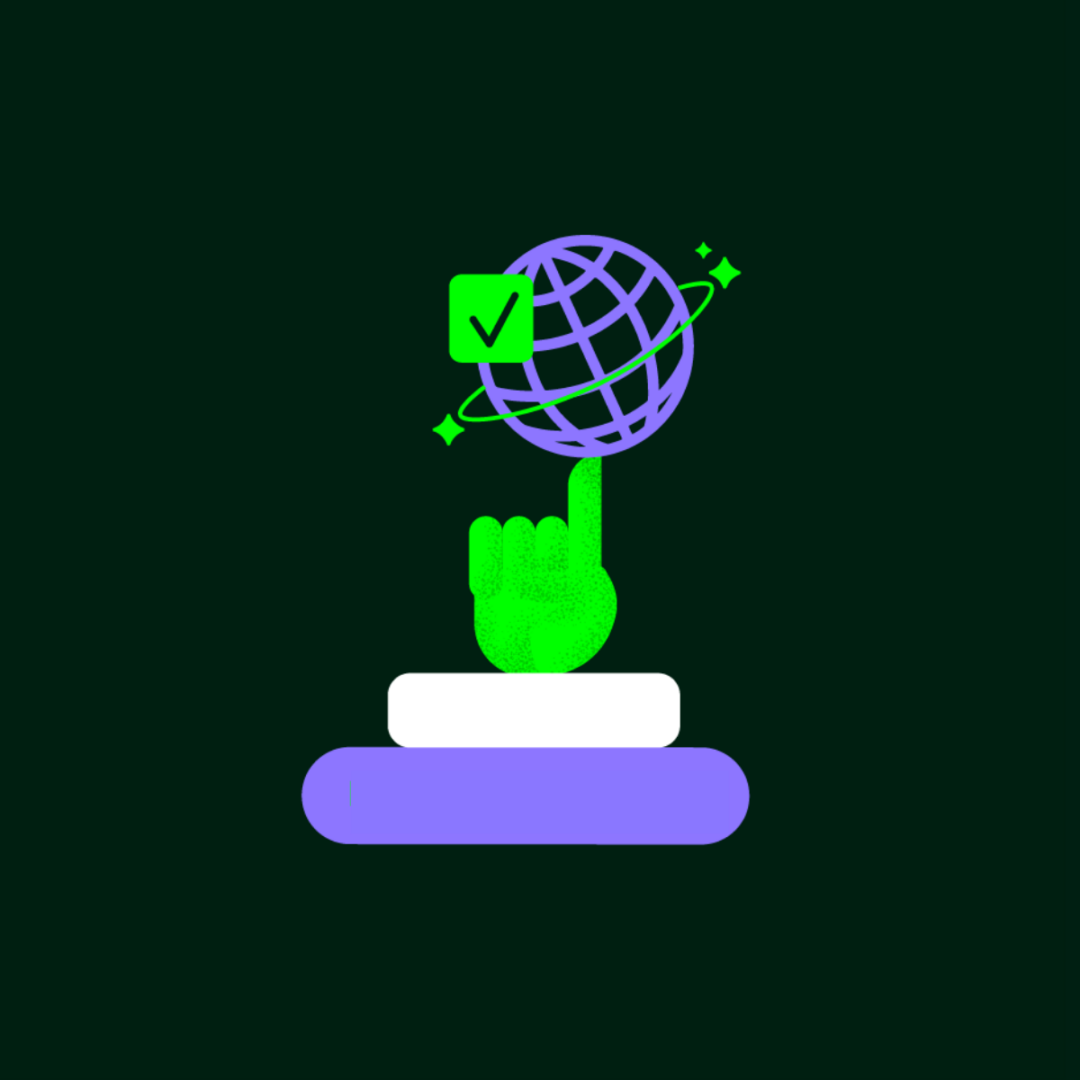Which Trends Will Define the Intellectual Property Industry in 2025?
- Firstpage
- Strategy
- Counterfeit
- DDOS attack
- Domain Hijacking
- Phishing
- Trademark infringement

The intellectual property (IP) industry is rapidly evolving with technological advances, globalisation, and digitalisation. Looking ahead to 2025, key trends are set to reshape how organisations manage and protect their intellectual assets. Here are the top trends in IP legal services, brand protection, domain management, and web security.

IP Legal Services
- Shift Toward Consolidated Solutions: As businesses face increasingly complex digital threats, there is a growing demand for integrated solutions that encompass domain management, intellectual property (IP) protection, and web security. Consolidating these services reduces operational complexity, enhances efficiency, and offers a comprehensive approach to safeguarding digital assets.
This trend is particularly relevant for industries like e-commerce, healthcare, and finance, where managing a cohesive digital and IP infrastructure is critical for competitiveness in the global market. (Source: The global integrated security market is projected to reach $33.4 billion by 2026, driven by the demand for comprehensive security solutions that consolidate IP and domain management services Allied Market Research)
- AI-Driven IP Applications: Artificial intelligence is playing an increasingly central role in the IP industry, streamlining processes such as trade mark searches, patent drafting, and monitoring infringement risks. According to WIPO, global AI-related patent filings increased by 40% between 2020 and 2023, signalling growing adoption of AI-driven innovations. However, recent cases have also highlighted the importance of human expertise to review automated processes and ensure the right actions are taken.
- Continued growth in Asian trade mark applications: The “World Intellectual Property Indicators 2024” report recorded high growth rates in trade mark applications in Indonesia and India in 2023. Overall, Asian IP Offices now account for around 70 percent of global patent, trade mark and design filings - a significant shift from just 10 years ago.
The EUIPO also mirrored these findings with trade mark application being up by 4% compared with 2023. In total 112,209 EUTM applications were filed between 1 January and 30 September 2024 (107,749 up to 30 September 2023). The leading single source of applications was Mainland China, which accounted for nearly 17% of filing volume so far in 2024, ahead of Germany (13%) and Italy (8%)*
- Cross-Border IP Enforcement: The global nature of digital platforms and e-commerce has intensified the need for robust international IP enforcement frameworks. With the recent EUIPO and the European Commission report stating that EU seizures reached 152 million fake items worth 3.4 billion EUR in 2023, collaboration among jurisdictions must strengthen, allowing for more effective protection of IP rights across borders.
- Emergence of Green IP: Patents related to sustainable technologies are gaining prominence as governments and businesses prioritise environmental innovation. These so-called “green IP" initiatives are incentivising the development of eco-friendly solutions. WIPO’s Green Database saw a 30% increase in entries between 2022 and 2024, reflecting this trend.
* Robert Reading, Senior Director, Brand Strategy and Special Projects, Clarivate

Brand Protection
- Growth in Monitoring and Enforcement Services: As digital commerce expands, the need to protect brands from counterfeiting, fraud, and unauthorised use is driving investment in both monitoring and enforcement services. The brand protection market is expected to experience strong growth as businesses focus on safeguarding their online presence and reputation.
Proactive measures such as continuous monitoring and rapid enforcement are becoming essential tools in maintaining brand integrity across platforms and jurisdictions.
- Sophistication in Counterfeiting: Advances in technology, such as 3D printing and AI, are enabling counterfeiters to produce more convincing fake products. In response, brands are adopting innovative anti-counterfeiting measures, including digital watermarks and advanced labelling.
- Staying Ahead in the Era of AI-Driven Brand Abuse: Recent advancements in technology, particularly in AI and machine learning, have given fraudsters the tools to create sophisticated campaigns with unprecedented speed and scale. These campaigns include abusive websites and outlets that are more convincing than ever, often relying on randomised domain names that evade traditional detection methods. Even when discovered, such domains frequently fall outside the scope of remedies like the UDRP. The challenge is clear: businesses need to match technological sophistication to effectively combat these threats.
Stuart Morris, Global Co-Head of Brand Protection
“The same technology advancements enabling this new wave of fraud and brand abuse must also be leveraged to protect brands. Detection efforts must expand, with intelligent systems analysing data to assess and prioritise threats effectively. By applying adaptive learning, brand owners can transform insights into actionable strategies. Without which, even the largest brands may struggle to safeguard their IP assets, reputation, and customers in this rapidly evolving landscape.”
- Proactive Monitoring of Social Media: Social media has become a hotspot for counterfeit goods and unauthorised trade mark use. Companies are investing in tools to monitor these platforms and address infringements swiftly. According to the latest report UK Intellectual Property Office (UKIPO) report on the role of social media influencers and their promotion and selling of counterfeit goods showed that 24% of males between the ages of 16 and 60 in the UK were prompted to buy counterfeit goods as a direct consequence of endorsements of so-called “influencers” using social media. This clearly highlighted that social media influencers play a pivotal role when it comes to shaping the intention of purchasers and that when encouraged to buy counterfeit goods, many consumers are more than happy to do so.
- Cross-functional Brand Protection Strategies: The lines between IP, digital security, and marketing are continuing to blur. Businesses are adopting integrated brand protection strategies that leverage collaboration across these departments to ensure comprehensive oversight.
Domain Management
- Policies and Data Accuracy: With growing cybersecurity concerns and evolving global regulations from organisations like the EU and UN, data validation and accuracy are more critical than ever. Discussions covered methods like address confirmation, postal verification, and ID checks, along with ICANN's compliance initiatives. The EU's NIS2 directive was highlighted as a key step toward a safer, more transparent domain ecosystem.

- Emergence of New TLDs: The adoption of new generic top-level domains (gTLDs) is on the rise, allowing brands to stand out in a crowded digital landscape. These domains provide unique opportunities for branding and marketing. ICANN and ccTLD (Country Code Top-Level Domains) registries are placing a greater emphasis in this next round of gTLDs on representing underrepresented communities, languages, and regions, ensuring the digital ecosystem becomes a more diverse and inclusive space. There has also been a lot of discussions on how to balance innovation and abuse prevention while drawing lessons from previous gTLD launches—like the recent decision to end private auctions.
- Mitigating Abuse: The Registration Data Request Service (RDRS) pilot concluded successfully, with discussions on its future and potential improvements. The accessibility of WHOIS data for law enforcement remains a key focus. Updates included the global deployment of DNSSEC and its impact on registrant behavior, as well as ICANN’s new Domain Metrica tool, offering insights into domain trends and aiding abuse mitigation.
Jeanett Tesfaledet, Registrar Compliance Manager
“With evolving regulations and growing cybersecurity threats, data accuracy and compliance are more crucial than ever. As new TLDs emerge and AI transforms domain management, balancing innovation, security, and inclusivity is key to building a safer and more transparent digital ecosystem.”
- Rise in Defensive Domain Registrations: Companies are increasingly registering multiple variations of their domain names to prevent cybersquatting and phishing attacks. This trend reflects the growing need to safeguard brand identity online.
- Globalisation of ccTLDs: Many ccTLDs are moving away from local restrictions to embrace globalisation, aiming to expand their customer base and increase domain registrations. By allowing global registrations, ccTLDs are leveraging the dual meanings of their extensions to create broader use cases, with the aim to significantly boost domain counts and commercial opportunities. In line with this, ccTLD registries are also implementing multilingual domain names to enhance inclusivity and accessibility. By offering domains in native languages, they build trust, boost engagement, and tap into new markets, supporting cultural diversity and aligning with the internet's focus on localisation.
-
AI and Automation in Domain Management: Integration of AI tools is becoming common place for processes such as domain name suggestions, portfolio optimisation, and fraud detection to enhance efficiency and user experience. This trend is pushing registrars to provide more accurate data and increase security.

Web Security
- Rising Demand for Domain and Web Security: With the increasing dependence on online platforms and digital communications, domain security and web protection have become crucial for preventing risks such as phishing and domain hijacking.
As cyber threats continue to rise, businesses are prioritising robust security measures that include multi-layer authentication, encrypted communications, and proactive domain protection strategies. This demand is further amplified by regulatory pressures on data privacy and cybersecurity across sectors.
- Integration of IP and Cybersecurity: As IP theft increasingly occurs through phishing, ransomware, and other cyberattacks, businesses are prioritising collaboration between IP and cybersecurity teams to protect sensitive assets. Microsoft’s 2024 cybersecurity report revealed a 25% increase in ransomware attacks targeting IP-rich organisations.
- Deepfake Detection Tools: The rise of deepfake technology poses a threat to brand reputations. Advanced tools for detecting and mitigating the impact of deepfakes are becoming essential for maintaining trust. According to Microsoft, organisations using deepfake detection software reduced reputational damage incidents by 20% in 2024.
Viktor Berglund, Global Chief Product Officer
“IP protection is now inseparable from cybersecurity. As threats like ransomware, deepfakes, and IoT vulnerabilities evolve, integrating advanced detection tools and cross-functional security strategies is essential to safeguard sensitive assets and maintain trust.”
- IoT-Driven IP Risks: This year, it is forecasted that there will be more than 75 billion Internet of Things (IoT) connected devices in use. This would be a nearly threefold increase from the IoT installed base in 2019.This proliferation of IoT devices has created new vulnerabilities for IP theft. As the number of IoT devices continues to grow, companies need to focus on securing these endpoints to protect their IP assets.
Conclusion
The IP industry in 2025 will be defined by its ability to adapt to technological, legal, and societal changes. From AI to enhanced global collaboration and cybersecurity integration, the trends shaping the future of IP emphasise the need for proactive, innovative, consolidated and comprehensive strategies. Businesses that embrace these changes will be better positioned to protect their assets and thrive in an increasingly digital and interconnected world.
Need help to strengthen your IP Management this year?
Let’s start a conversation today.





